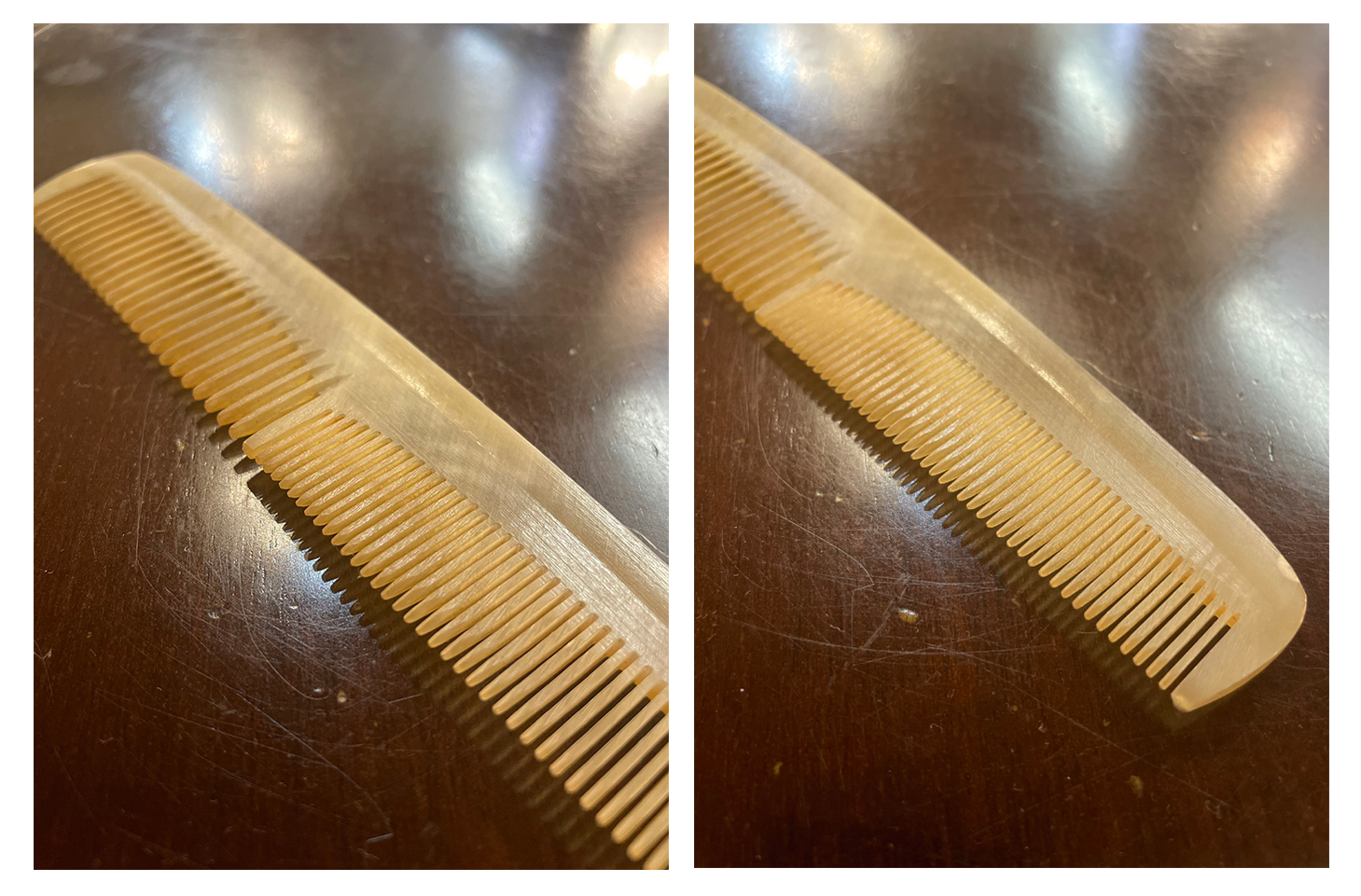Bone combs, that is, commonly made of horn or animal bone, are among the oldest artifacts made by man for personal care, as evidenced by the finds discovered by archaeologists dating back thousands of years.
Until the advent of plastic and industrial production in the XX century, these objects were typically handmade by craftsmen called pettinai or pettinagnoli.
The processing generally involved a rather long initial phase for the preparation of the raw material which had to be left to soak for several days with a series of substances (from urine to quicklime, ash, tartar, salt, vinegar) in such a way that it softened so that it could then be molded into the desired shape.
Alternatively, the bone or horn were softened by heating them over the flame and then carved and sculpted.
The artisans expressed all their mastery in the decorations and even came to color the pieces using saffron, verdigris, green paste, creating very refined objects, real unique pieces.
The most valuable artifacts even provided for the use of tortoise shell and ivory.

Bone comb with medium and narrow teeth
Beyond the aesthetic aspect and the value that some of these objects may have, bone combs have some advantages:
- being made of natural materials they do not electrify the hair;
- they comb with greater ease and gentleness, gently stimulating the scalp without scratching it;
- unlike plastic, which is waterproof, bone and horn are able to absorb the oils naturally present in the hair and redistribute them evenly throughout it. For this reason they are particularly suitable for those with long, dry hair and subject to split ends.
Conversely, bone combs:
- don’t tolerate water and humidity;
- are quite delicate and if they fall on a hard surface such as a floor they could break. However, with due attention they can last a very long time, as evidenced by the ones we keep in our shop, which no historical customer can give up.

